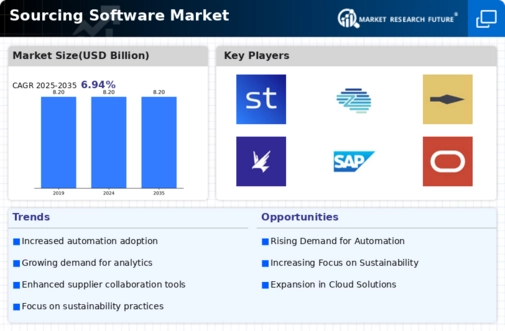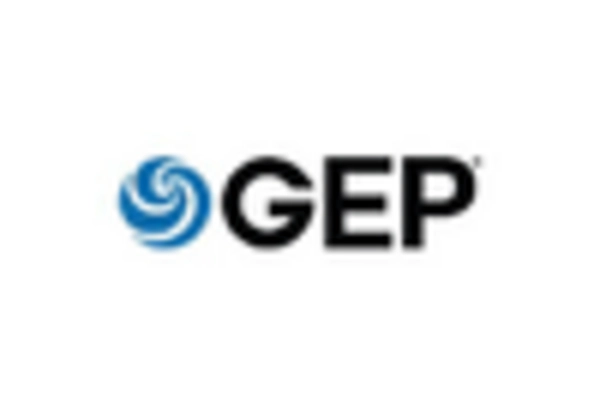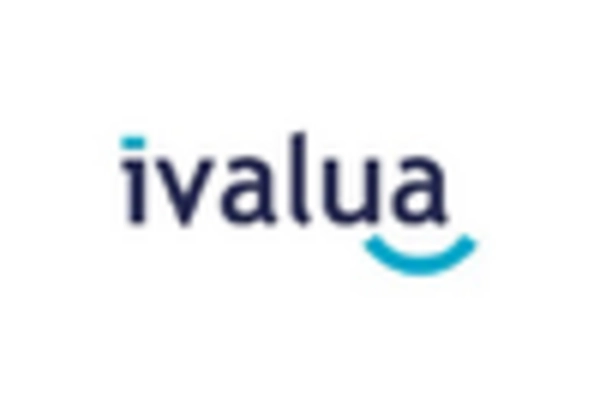Emergence of Advanced Analytics
The Sourcing Software Market is increasingly characterized by the emergence of advanced analytics capabilities. Organizations are leveraging data analytics to gain insights into procurement processes and supplier performance. Recent statistics reveal that companies utilizing advanced analytics in sourcing can achieve a 20% improvement in decision-making efficiency. This trend is driven by the need for data-driven strategies that enhance procurement outcomes. Advanced analytics tools enable organizations to identify trends, forecast demand, and optimize sourcing strategies. As businesses strive to make informed decisions based on data, the integration of advanced analytics into sourcing software is likely to become a key differentiator in the market. Therefore, the emergence of advanced analytics is poised to play a crucial role in shaping the future of the Sourcing Software Market.
Adoption of Cloud-Based Solutions
The Sourcing Software Market is witnessing a significant shift towards cloud-based solutions. Organizations are increasingly adopting cloud technology to enhance accessibility and scalability in their sourcing processes. Data suggests that the cloud-based sourcing software segment is projected to grow at a compound annual growth rate of 25% over the next five years. This growth is attributed to the flexibility and cost-effectiveness that cloud solutions offer, allowing businesses to access sourcing tools from anywhere at any time. Additionally, cloud-based platforms facilitate real-time data sharing and collaboration among stakeholders, which is crucial for effective decision-making. As more organizations recognize the advantages of cloud technology, the adoption of cloud-based sourcing software is likely to accelerate, further propelling the growth of the Sourcing Software Market.
Rising Demand for Cost Efficiency
The Sourcing Software Market is experiencing a notable surge in demand for cost efficiency among organizations. Companies are increasingly seeking solutions that streamline procurement processes and reduce operational costs. According to recent data, organizations that implement sourcing software can achieve cost savings of up to 20%. This trend is driven by the need to optimize supply chain management and enhance supplier relationships. As businesses face competitive pressures, the adoption of sourcing software becomes essential for maintaining profitability. Furthermore, the ability to analyze spending patterns and identify cost-saving opportunities positions sourcing software as a critical tool in achieving financial objectives. Consequently, the rising demand for cost efficiency is likely to propel the growth of the Sourcing Software Market in the coming years.
Increased Focus on Supplier Collaboration
In the Sourcing Software Market, there is an increasing emphasis on fostering collaboration with suppliers. Organizations recognize that strong supplier relationships can lead to improved product quality and innovation. Recent studies indicate that companies that prioritize supplier collaboration experience a 15% increase in overall performance. This trend is further fueled by the need for agility in supply chains, as businesses strive to respond swiftly to market changes. Sourcing software facilitates effective communication and collaboration, enabling organizations to engage suppliers in the decision-making process. By leveraging technology to enhance supplier interactions, companies can achieve better alignment with their supply chain partners. As a result, the focus on supplier collaboration is expected to drive the growth of the Sourcing Software Market, as organizations seek to create more resilient and responsive supply chains.
Regulatory Compliance and Risk Management
In the Sourcing Software Market, the increasing complexity of regulatory compliance and risk management is driving demand for advanced sourcing solutions. Organizations are required to navigate a myriad of regulations related to procurement and supply chain operations. Recent findings indicate that companies utilizing sourcing software for compliance management can reduce the risk of non-compliance by up to 30%. This trend underscores the importance of integrating compliance features into sourcing software, enabling organizations to monitor and manage risks effectively. As businesses face heightened scrutiny from regulatory bodies, the need for robust sourcing solutions that ensure compliance and mitigate risks is becoming paramount. Consequently, the focus on regulatory compliance and risk management is expected to significantly influence the growth trajectory of the Sourcing Software Market.


















Leave a Comment